Do You “Do Bugs”?
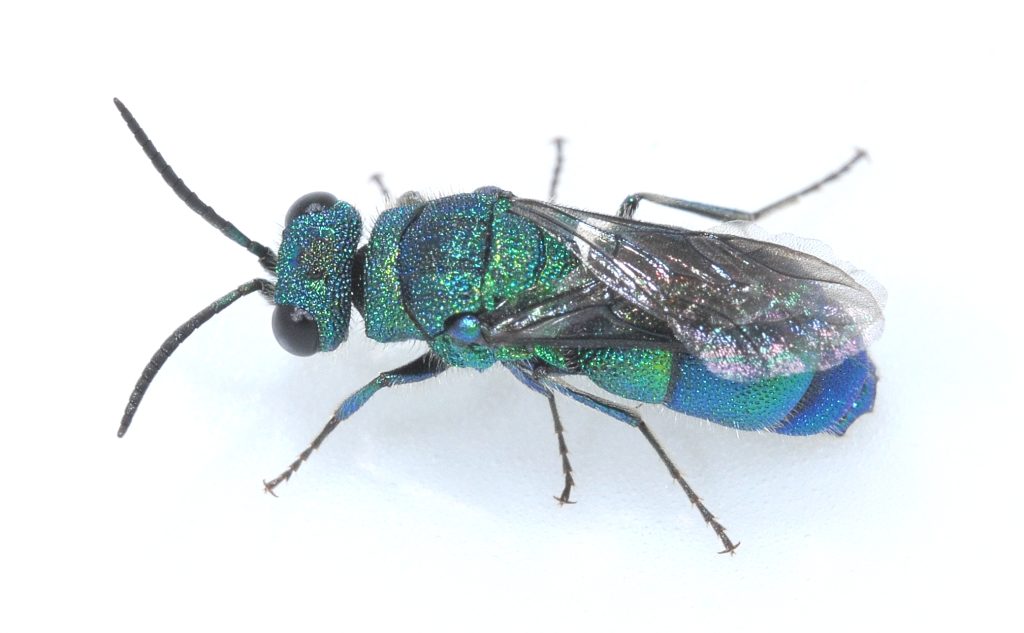
BY JOHN ACORN
In the imaginations of most naturalists, “nature” is composed primarily of plants, plus “fish and wildlife,” living in a physical world made up of soil, situated on top of “geology,” and supplied with water through rainfall. “Bugs” are also part of this world, but typically we characterize them only by how they relate to the so-called central elements of nature. For example, we often refer to the smaller creatures as “bird food,” “fish food,” “pollinators,” or “plant pests”; and for some people, oddly enough, this explains their very existence. It is much less common for naturalists to put bugs in the cognitive foreground, as organisms of interest in their own right.
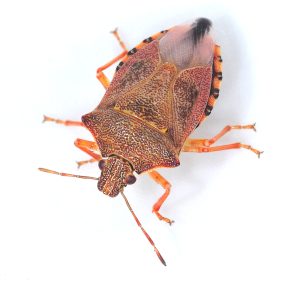
A predatory stink bug, to which the term "bug" can be properly applied. John Acorn.
The term “bug,” however, needs explanation. The broad term for insects, spiders, and other jointed-legged animals is “arthropod,” but this word is too technical for most people. “Invertebrate” is an even broader category that includes worms of various types, snails, slugs, and a variety of aquatic creatures, and it is also too technical for general usage. Thus, it seems that “bug” is indeed the best available name for the things I wish to contemplate here (even if it is used entomologically in a stubbornly pedantic sense to refer only to “sucking bugs” in the order Hemiptera). Likewise, there really isn’t a word like “birder” to describe someone who studies and appreciates bugs. I tried coining the term “bugster,” but it isn’t exactly catching on.
It is fair to characterize the traditional, bug-devaluing view of nature as vertebrate-centric, and plant-centric, and those of us with an interest in insects, spiders, and other invertebrates recognize this bias quite easily. To be fair, though, I think that most birders and botanizers are already aware of the issue. They realize that insects, spiders, mites, and other arthropods are “ecologically very important,” but avoid putting much additional thought to the matter, explaining, “I’m not a bug person.”
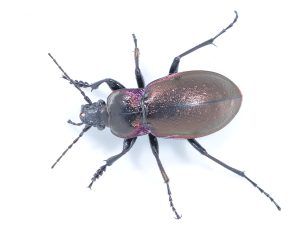
Purple-rimmed Carabus beetle (Carabus nemoralis), common in gardens in Alberta. John Acorn.
Identity is a big theme these days. We hear a lot about social identity, cultural identity, and identity politics. Naturalists have their own identities, too, and thinking about identities can help us understand each other a bit better, just as it helps in broader society. Now, I’m no expert on identity (it’s not part of my identity, you could say), but it seems to me that we often say things like, “I’m a plant person,” or “I’m a bird person,” and thereby self-identify as a particular kind of individual with a particular focus. More importantly, we often use such statements to justify ignoring some aspects of nature, as in, “I don’t know what that cool-looking thing is, with such fascinating behaviour. I’m not a bug person so you’ll have to ask someone else.”
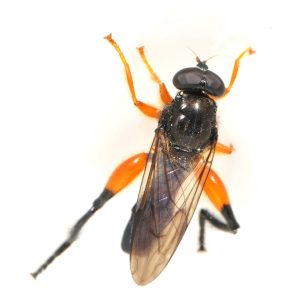
Chalcosyrphus curvaria, a hover fly that appears to mimic a parasitic wasp. John Acorn.
The solution to the identity problem is to think in terms of activity, not identity. When you study a warbler, you are engaging in a birding activity (you are “doing birds”), but that doesn’t necessarily make you a “bird person.” When you contemplate the identity of a wildflower, you are “doing plants.” I often do plants, but I don’t think of myself as a “plant person.” So “doing bugs” does not require membership among the “bug people,” whoever they might be.
Perhaps the emphasis we place on plants and vertebrates comes from the fact that plant-centric and vertebrate-centric natural history are both relatively crowded fields, and functioning in a crowded field requires a certain amount of effort. To be considered a competent member of the birder or botanist crowd takes time, and even a bit of social manoeuvring. When everyone in the group knows more or less what is going on, the interactions (both good and bad) occur quite naturally.
To some extent, bug people don’t share this situation. There are currently 433 species of birds known from Alberta, and 1,775 species of vascular plants. In comparison, no one actually knows how many arthropod species there are (and yes, we have tried to count them), although the answer is somewhere in the 25,000 to 30,000 range. Even the experts realize that they have limits. They either take the identification as far as they can (“It’s a ground beetle, in the family Carabidae, and there are as many species of ground beetles here as there are birds”) or they admit their ignorance (“Good question — I wish I knew more about the countless species of parasitic wasps that live in Western Canada, so maybe we should look on BugGuide.net”). There is an introverted appeal to the study of bugs, since you can have whole chunks of nature more or less to yourself, with only a few other experts to negotiate with when proffering an opinion on identification, or an explanation of something they have seen.
Nonetheless, bug appreciation is indeed on the rise. Macro photography is easier than ever before, even with a good smartphone, and there are countless places online where one can submit one’s arthropod images for identification or appreciation by others, including iNaturalist.ca, BugGuide.net, and e-Butterfly.org). Bug photography is cheaper than bird photography, and about the same difficulty level as photographing flowers. Up close, bugs also promote themselves, in a sense, with remarkable body shapes, exquisite details, and in some instances brilliant colouration. Even flies can have a strong appeal to some people, especially photographers. Many flies are quite bristly, and these bristles look great when you capture them in a really crisp macro shot, convincing photographers that your lens is “amazingly sharp.”
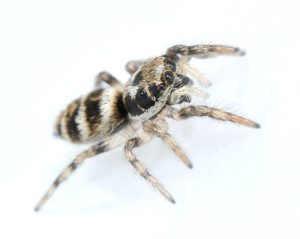
A Zebra Jumping Spider, an introduced but harmless species at home on and in houses. John Acorn.
For amateur entomologists, the most popular insects have always been butterflies and beetles, since they make lovely specimens, and many people of my generation began their insect studies as collectors. Moths are just as pretty as butterflies, so they have their devotees as well. Bees also have their fans (as evidenced by the Alberta Native Bee Council) because of their role in pollination, and increasingly we realize that various flies, beetles, and other flower-visiting insects are important pollinators as well. Spiders have a different sort of appeal, and more than any other group of bug, they divide naturalists quite neatly into spider lovers and spider haters, with not many folks in the middle ground. These are just the most common forms of arthropod appreciation, and naturalists are slowly but surely beginning to realize that such pursuits are not just oddball interests — they can be just as rewarding and interesting as birding or botanizing.
Many naturalists like to share their sightings, using eBird for example, but whereas bird ranges and seasonal movements tend to be extremely well known, those of many bugs are not. I wrote a review paper on this subject and concluded that the chances of documenting a valuable record are much higher for bugs than they are for birds or plants. With governments now attempting to assess the conservation status of various bugs, all such records are of potential interest, and they do receive scrutiny from the biologists who engage in the “statusing” exercises (many of which, by the way, are currently “data deficient”).
I don’t want, however, to give the impression that insect life is a big mystery here in Alberta. There has been a long and impressive tradition of insect study in this province, and we know a tremendous amount about our bugs, in terms of taxonomy, geographic ranges, feeding habits, and seasonal occurrence. However, there are also countless gaps in this knowledge base, and apparently very little incentive for professional biologists to fill these gaps. They prefer to focus on applied or broadly ecological problems, for reasons that actually do make sense. This leaves a lot of opportunity for science-minded amateurs,1 and a publication such as Nature Alberta Magazine is only one of many possible outlets for such studies.
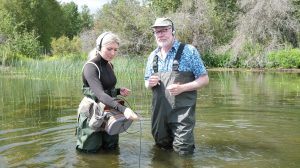
John Acorn using a hydrophone to listen in on water boatmen (Corixidae), with Yelena Riemer
These days, I’ve been focusing my own efforts on the study of water bugs. Using a dip net in the shallows of Gull Lake, I have been scooping up corixids — aquatic bugs in a family known colloquially as water boatmen. I’ve been studying the insects here at Gull Lake since I was a child, but I still have much to learn, so during the summer of 2021 I decided to familiarize myself with the local corixid species. To reality-check my observations, I am regularly in touch with a small set of corixophilic naturalists (speaking of which, see Cheryl Tebby’s article about the Alberta Biodiversity Monitoring Institute on page XX of this issue).
In terms of identification, corixids are about as tricky as shorebirds, or grasses — they are all similar in overall shape and colouration, but with subtle differences that are rewarding to learn. Some are small, no more than 4 millimetres long, so I need to use a microscope, or a macro setup on my camera, to see them properly. Happily, these tools are no more expensive or difficult to use than the spotting scope I employ when scanning the beach for “peeps,” or my telephoto “bird lens.” As an added bonus, corixids also make sounds, so I am enjoying the process of recording their calls, using a hydrophone and portable sound recorder. “Bugging by ear,” you might say.
There are so many bugs that you can learn a new group each year if you are so inclined. Each group provides a different view of the natural world. For some, you have to think about the diversity of water bodies, some of which can be quite tiny indeed. For others, you need to learn something about “host plants” (a term that is admittedly insect-biased, in the same way that “pest” or “pollinator” are plant-biased). For others, it’s about particular terrestrial microhabitats, essential for each species, and sometimes extremely quirky.
Mind you, once you know something about bugs, it is tempting to go a bit too far, and argue that they are much more important than the rest of the living world. E.O. Wilson, the most famous entomologist of our time, has referred to insects as “the little things that run the world,” backing up this thought with an impressive justification2 (and inspiring an insightful “sequel” by ecologist John Terborgh, who wrote a rebuttal paper3 entitled “The Big Things That Run the World”). The notion that insects are super-important ecologically can either broaden one’s perspective, or narrow it. Some entomologists actually think all other animals are trivial, and unworthy of much attention at all. Some think that birds are for amateurs, most mammals are just “charismatic megafauna,” and that “real science” should be left to those who only deal with obscure creatures, scientific names alone, and dichotomous keys. Any taxon for which there is a field guide is simply not worth these people’s attention. Such attitudes are quite counterproductive, for what I believe are obvious reasons.
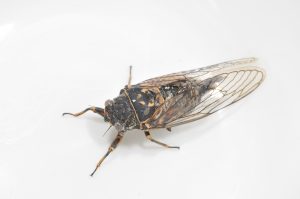
We have cicadas in Alberta (Okanagana sp.) but we still don't know how to tell them apart by their calls. John Acorn.
We all like to think that we understand nature, at some level. But we all also admit that, as the saying goes, “it’s complicated.” In truth, though, none of us even come close, even if our ideas are more defensible than those of your average real-estate developer or dirt-bike enthusiast. Still, a worldview including bugs is more accurate than one without. I am, however, getting ahead of myself. Most naturalists have only a limited interest in understanding nature, and most are quite modest in the extent to which they try to predict and manage nature as well. Instead, they spend time out of doors because it enhances their lives, and they support conservation for the same reason, leaving the so-called understanding of nature to the professional ecologists, whose conclusions they accept at face value. “Doing bugs” is rewarding in its own right, and I hope you will take the time during your outdoor forays to observe, identify, and appreciate the bugs around us, at whatever level works for you.
References
- Acorn, John. 2017. Entomological Citizen Science in Canada. Canadian Entomologist. 149: 774-785.
- Wilson, E.O. 1987. The Little Things That Run the World (The Importance and Conservation of Invertebrates). Conservation Biology. 1 (4): 344-346.
- Terborgh, John. 1988. The Big Things That Run the World — A Sequel to E. O. Wilson. Conservation Biology. 2 (4): 402-403.
This article originally ran in Nature Alberta Magazine - Fall 2021
